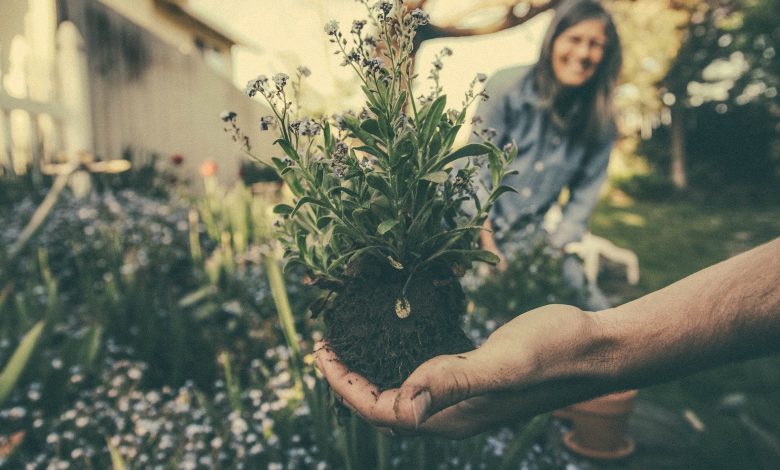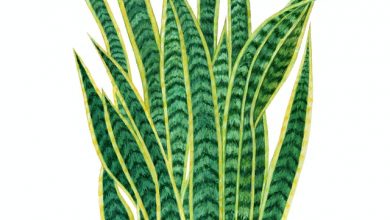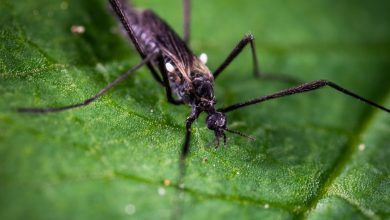How to Choose the Best Plants for Your Garden

It’s common for people to head into their local nursery and to be overwhelmed with all of the beauty around them. Oftentimes we’re drawn to colors and shapes that we think are most attractive, and we imagine how they would look in a perfect spot in our garden.
Unfortunately, while we’re envisioning all of these gorgeous blooms in our space, we’re not actually thinking about what our space can provide for these plants. Will the flowers you’ve purchased be able to survive in your soil? Does your backyard have enough sunlight to encourage seedling growth?
There are lots of questions you should be asking before choosing your garden plants. To help you in the right direction, we have some tips so you’ll know how to choose the right plants for your garden.

What is in Your Garden?
If you were asked what kind of garden you have, would you know how to answer? Understanding what kind of garden you have is so important to having a successful growing season year-in and year-out.
Some of the main factors you’ll need to know about include: Soil, direction and exposure.
Soil
Soil is so much more than just the pile of dirt under your feet. Soil is made up of millions of components including vegetation, manure, and organisms like bugs and bacteria. All of the microorganisms beneath the surface work together to create a nutrient source for all plant life.
Depending on your location, topography, and weather, you can have a much different soil makeup than someone even a few miles away. However, you should have a similar soil to other properties in your area, and you can always take a look around and easily find out what grows well.
There are a few different soil types to be aware of that include:
- Clay: Clay soil has all kinds of minerals inside of it, but it quickly becomes incredibly hard and difficult to work in the summer. Similarly, in the wintertime, clay soil becomes tough and waterlogged.
- Silt: Silt soil is similar to clay soil in that it is very fertile and holds water. However, this soil is silkier and less sticky.
- Sandy: Sandy soil contains larger grains and has high drainage capabilities. However, sandy soil is lower in nutrients and is more brittle and crumbly. Sandy soil is an acidic soil.
- Peat: Peat soil is rich in organic matter, easy to manipulate, and can hold a lot of water.
- Loam: Loam is a combination of three soils: sand, silt, and clay. As a result, the soil is full of nutrients, drains well and is easy to manage.
The makeup of your soil will fall into one of four categories:
- Alkaline: Alkaline soils are clay soils. They have a pH balance that sits anywhere above 8.5, and they’re usually recognizable because they are harder to penetrate and do not offer very good filtration for air and water.
- Alkali: Alkali is certainly unfavorable in comparison to the other soil types because plants have a harder time getting the nutrients they need. Their composition is mostly blamed by the presence of sodium carbonate.
- Acidic: Acidic soils include any soil that has a pH balance lower than seven. One of the ways that soil experiences a lowering in pH is when acidic, organic matter breaks down in the ground. Another way that soil can become acidic is through large amounts of rainfall, also known as leaching. The water washes out nutrients like magnesium and calcium that are necessary to keep acidity low. Lastly, the use of nitrogen-based fertilizers can also introduce a high amount of acid into the soil.
- Neutral: Neutral soil sits right in the middle of acidic and alkaline soils, with a pH balance of 7. Most plants can survive in this kind of soil, since it’s favorable on the pH scale. If you have neutral soil to work with, you have greater options than someone at the far end of either side of the scale.
Every plant has a specific preference between these three classes; however, many plants can survive in other types if they are forced to.
If you’re not sure what kind of soil you have, you can purchase a soil testing kit from your local nursery. These are fairly inexpensive and easy to use. Similarly, you can take some soil samples and place them in glasses with water. Then, dip some litmus paper pieces into each glass to find out what kind of soils you have around your property.
When you get your results, you’ll have a better idea of what plants will do well in your space.
Best plants for acidic soil include:
- Gardenias
- Azaleas
- Holly
- Begonias
- Trilliums
- Willow Trees
- Beech Trees
- Magnolia Trees
Best plants for alkaline soil include:
- Lavender
- Lilac
- Verbascum
- Honeysuckle
- Lily of the Valley
- Marjoram
- Spindle

Direction/Sunlight
If you’re at the nursery getting some help, an associate might ask you about your garden’s aspect. What they’re asking you is which direction your garden faces. Knowing if your garden faces north, south-east, or south-west is very helpful to recognizing just how much sun that area is going to get in a single day.
For example, a garden that has a north-facing garden will get far less hours of sun than a garden that faces south-west. The shape of your garden, as well as sheds, fences, and other factors, might also have a hand in how much sun is actually able to access your backyard.
You might have neighbors’ houses blocking the light, you might have a taller house, or perhaps you have backyard furniture that blocks the light. Whatever it may be, you’ll need to survey your yard throughout a day to get a feel for how much sun really can get in.
Once you know what kind of sun exposure your garden gets, you’ll be able to make better decisions about the type of plants you should get. Keep in mind, if you were dreaming of having a plant that really loves the sun, you can always incorporate it at the front or side of the house if your main garden doesn’t get enough light.
Don’t force plants to grow in places where they aren’t getting adequate sun. This is true for all plants, including trees, flowers, and vegetables. It’s much better to grow something that will flourish than to force a plant that may simply wither and die.
When you’re trying to decide on what full-sun plants to go with, it’s a great idea to choose a native plant. These plants are already well suited to your location and climate, and they will have the highest chances of success when exposed to full sunlight.
Plants that need full sunlight for six or more hours a day include:
- Coneflower
- Butterfly Weed
- Sedum
- Lavender
- Bee Balm
- Aster
- Lamb’s Ear
A lot of the full-sun flowers also tend to please the pollinators of our gardens. If you’re hoping to add some plants to help the butterflies and bees, these flowers are ideal for attracting and feeding a wide range of these insects.
There isn’t any plant that doesn’t need some light, but there are some options that can survive with low light each day. If your garden is small or your planters and window boxes never get direct sunlight, consider some of these plants for your garden:
- Dracaena
- English Ivy
- Philodendron
- Snake Plant
- Spider Plant
- Chinese Evergreen
Other than being partial to no sunlight, what these plants also have in common is that they are all variations of green shades. There is very little other color seen in these plants, since sunlight is required for most colorful plants.
That being said, these hardy, green plants are great both indoors and out and they don’t require very much tending. Additionally, they won’t spread too far in your yard, and depending on your soil, they may not require too much watering either.
Shelter
If your garden closed in by walls and fences? Or is it exposed to the elements with little to protect it? The amount of shelter in your garden will also have a say in what kinds of plants you can grow in your garden.
Think about the kind of weather you have in your location. Do you have a rainy season that gets very windy? Are you in a southern location that’s prone to hurricanes and tornadoes? Weather is a huge part of how successful plants can be, so take this into consideration.
Similarly, if you’re just starting with some new seedlings, it’s best to do so during seasons that are a little more calm and dry. Avoid planting new seedlings during cold, rainy, or windy seasons, since there’s a good chance they won’t be strong enough to stay in the ground or avoid waterlogging.
Tips for Deciding Your Perfect Garden

Avoid Choosing Plants Based on Looks
Nurseries will offer all kinds of plants to you, even if they’re not exactly suited for the climate they’ve been brought to. Try not to get too hung up on plants that look bright and colorful at the nursery; some of these plants are tropical and won’t last a winter in colder climates!
Instead of choosing plants based entirely on looks, do your research on the plants that are best suited to your backyard and climate. This way, you can be sure you’ll have a healthy garden that will dazzle your friends.
Keep Plant Labels
The labels on your plant are there for a reason – they are your friend, so refer to them as much as possible! Plant labels will tell you everything from how much water your plant needs, to how much sunlight they’ll want and what kind of soil is best.
If you’re just starting with some new plants you’ve never had before, place these little tags right in the soil near the plant. This will remind you what you’re growing there and what kind of conditions it likes best. If you’ve got pests or curious pets in your yard, just keep the tabs inside and write the location of the plant on them.
Choose a Color Scheme
If you end up leaving the nursery with a wild assortment of flowers and colors, there’s a good chance you won’t be totally happy with how your garden turns out. (Unless of course, a rainbow of colors is what makes you happiest!)
To make plant shopping easier, decide on a maximum of three colors that you want in a garden space. Check out all of your options based on those colors and the environment they require. This will give your garden a more cohesive look, and you’ll know that your plants will thrive in the space you give them!
Mix Up Shapes and Sizes
If you’re not sure how to choose the right plants for your garden, another great rule of thumb is to mix up the shapes and sizes. Having a combination of wide, skinny, short, and tall plants allows for each plant to stand out in its own way.
Not only that, but having a variety of shapes makes a garden look fuller and healthier. Try to plant short and rounder plants at the front of the garden, with taller and larger plants in the back. This will help the shorter plants to have access to the sun amidst all the bigger plants.

Consider Your Seasons
One of the things that lots of gardeners don’t think about is what their gardens will look like in seasons other than summer. Do any of your plants survive through the winter? Would you consider adding some evergreens or other greenery that will keep their leaves after a snow?
Some plants look amazing with a layer of snow on them, and they’ll add an extra level of sparkle to your garden when other plants are long gone. Similarly, will any of the plants change colors in the fall and deserve a front row seat?
Ask a professional at your nursery for more in-depth information about plants that do well in all seasons. This will keep your garden interesting all year-round!
Don’t Forget About Size
Seedlings and baby plants will naturally be small when you first get them, but did you have any idea that your shrub would grow so large? Some people are overwhelmed by a plant that started out fairly small but is now beginning to take over their well-planned landscape.
Size is certainly something to take into consideration. If you have a vision of what your mature garden looks like, then you should know what plants will stop growing at your preferred height. Some plants and trees come in a range of sizes, so you can be picky about which ones you incorporate.
The last thing you want to have to do is find the perfect plants for your surroundings, only to have them expand exponentially from all the wonderful resources!
If you want large plants, try to keep them on the outskirts of your yard for privacy and wind protection. Never plant them too close to the house, as larger trees and plants can pose a danger to your home.
Altering Your Backyard
If you are hell-bent on having certain plants in your garden that don’t mix with your soil or sunlight, you might consider potting them. This way, you can give them the exact kind of soil they need (grainy, rocky, acidic, etc.) without having to start your garden over.
Similarly, potting specific plants means that you can move them around if they require more or less sun than your garden gets. You can even think about bringing these plants into the house during the wintertime, where they may lay dormant as opposed to dying.
Succulents are one of those plants that have a very picky soil composition and sunlight requirements. Potting these plants can be very convenient to suit their needs, and they will happily stay dormant in a warm space in your home until the frost is gone.

Research is Key
If you’ve done enough research on the kind of garden you have, then you’re already off to a good start. Recognizing what you can offer plants, and which plants will respond well to those elements is one of the most surefire ways to build a garden that will flourish.
If you’re not sure what you’re doing, bring a sample of your soil to the local nursery and learn more about what your garden can give. No space is impossible to turn into a garden, so even if it takes a little more elbow grease to get things growing, it will be well worth it!



